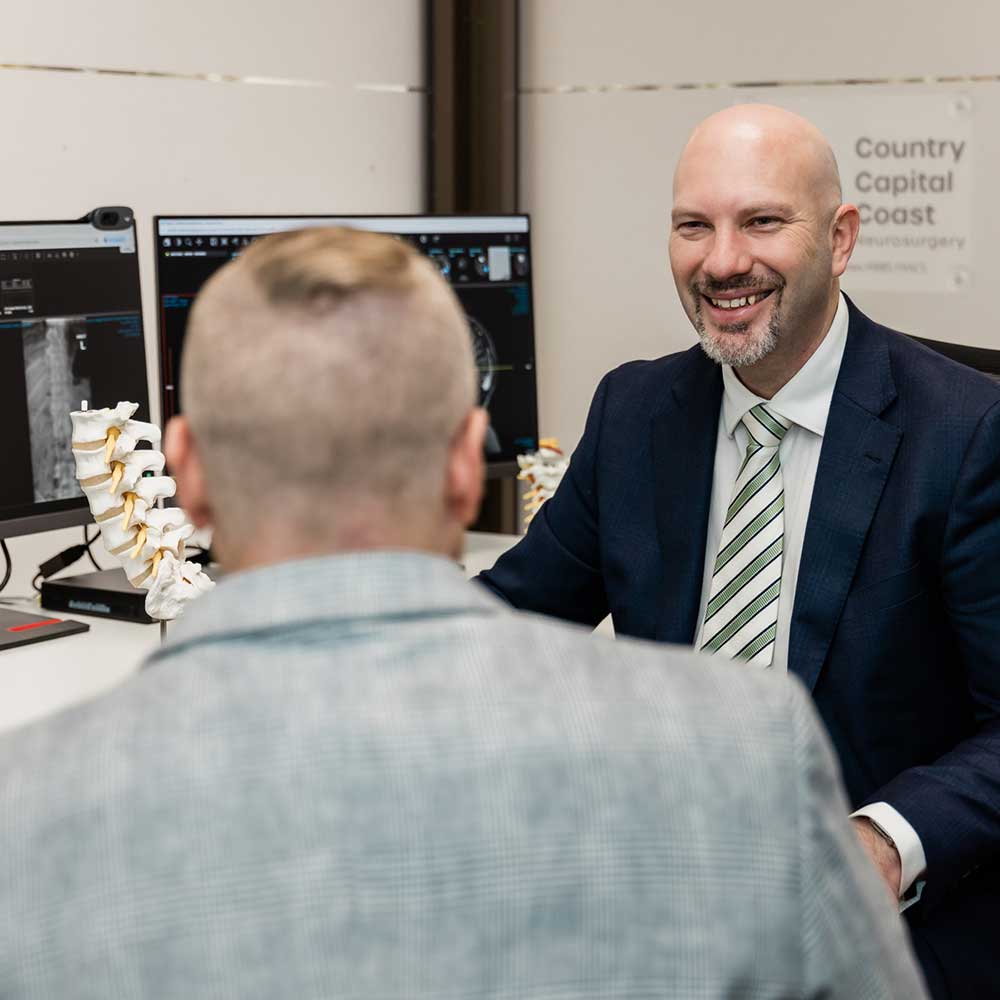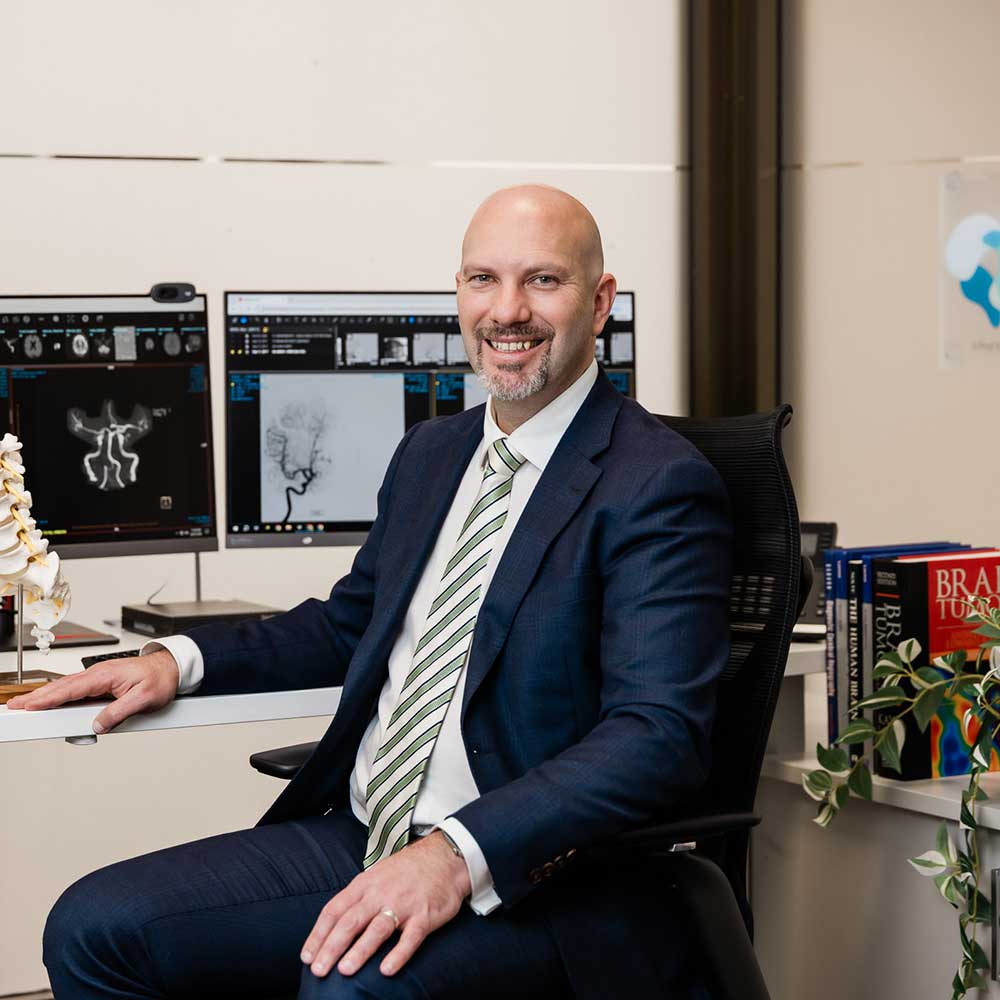A/Prof Peter Mews provides expert care in the management of both common and complex spinal disorders. With a focus on advanced techniques including minimally invasive spine surgery and complex spinal reconstruction, he treats patients from Canberra, Wagga Wagga and Moruya on the South Coast. His expertise covers degenerative disease, trauma, tumours, deformity and vascular conditions, offering a comprehensive approach tailored to each individual.
Degenerative changes of the spine are among the most common causes of pain and disability in Australia. According to the Australian Institute of Health and Welfare, back pain is one of the leading contributors to disease burden, particularly in adults over 45.
Symptoms may include localised pain, shooting pain into the arms or legs (radiculopathy), weakness, numbness, or impaired walking.
Treatment ranges from physiotherapy and medication to advanced surgical techniques such as decompression, discectomy, laminectomy or spinal fusion. Minimally invasive procedures may offer faster recovery with smaller incisions and less disruption of surrounding tissues.
Conditions treated include:
Traumatic injuries to the spine are medical emergencies, often resulting from road accidents, sporting injuries or falls. In Australia, spinal trauma disproportionately affects younger males and can result in long-term disability if not managed appropriately.
Symptoms may include pain, deformity, neurological weakness, sensory loss or paralysis.
Treatment may involve stabilisation with instrumentation, decompression of the spinal cord, and careful rehabilitation. A/Prof Mews is experienced in managing both acute and complex post-traumatic conditions of the spine.
Examples include:
Spinal tumours may arise within the spinal cord, from the coverings around it, or from the bony spine itself. Metastatic tumours from cancers elsewhere in the body are particularly common.
Symptoms can include persistent back pain, neurological weakness, numbness, difficulty walking, or bladder/bowel disturbance.
Treatment often involves surgery to relieve pressure, stabilise the spine, or obtain tissue for diagnosis. This may be combined with radiotherapy or systemic therapy.
Types include:
Although less common, infections of the spine can cause serious complications if not promptly managed.
Symptoms include fever, severe back pain, and neurological deficits. Risk factors include diabetes, immunosuppression and recent surgery.
Treatment involves antibiotics and, where required, surgery to drain abscesses, stabilise the spine or decompress the spinal cord.
Examples include:
Some spinal conditions are present from birth or develop during growth. These can cause progressive deformity, tethering of the spinal cord, or neurological deficits.
Symptoms may include weakness, foot deformities, scoliosis, bladder dysfunction or pain.
Surgical intervention aims to untether the spinal cord, decompress fluid cavities, or reconstruct the spine to prevent further deterioration.
Conditions include:
The blood vessels of the spinal cord are susceptible to rare but serious abnormalities. These conditions may cause progressive weakness, numbness, or paralysis.
Treatment may involve endovascular embolisation, open surgery, or a combination of both.
A/Prof Mews’ unique dual training in open and endovascular surgery allows him to offer highly specialised management of spinal vascular disease.
Examples include:
Cerebrospinal fluid (CSF) can leak from the spine due to trauma, surgery, or spontaneously. This may cause severe headaches, nausea, or neurological symptoms.
Treatment options include surgical repair of the leak, repair of dural tears, or shunt procedures in selected cases.
Conditions include:
A range of additional spinal conditions may require specialist neurosurgical treatment. These include rare structural abnormalities, complex revision cases, or disorders affecting the upper cervical spine.
Examples include:
Spinal surgery demands not only technical precision but also a personalised approach to each patient’s condition. A/Prof Peter Mews is highly experienced in both traditional and minimally invasive spinal techniques, offering patients the latest advances in surgical care.
His expertise in complex spinal reconstruction and vascular spinal disorders makes him one of the few neurosurgeons in Australia with such breadth of skill.
By consulting across Canberra, Wagga Wagga and Moruya on the South Coast, he ensures patients throughout the region can access world-class spinal care closer to home.


